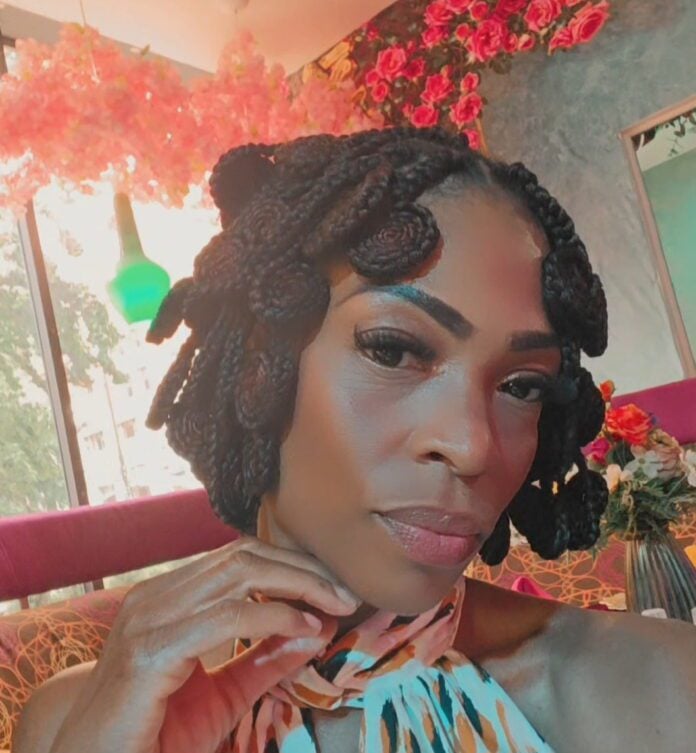The Indiana Fever’s Commissioner’s Cup victory generated millions of social media impressions and broke viewership records.
Yet if you only watched the highlight reels, you’d think it was a solo act. A blonde basketball savior dropping logo threes. An “it” girl under siege. What those glossy clips miss — consistently — is the connective tissue of a team: the trust and balance that doesn’t trend but wins games.
After the Fever’s win in the WNBA’s lucrative mid-season tournament — one with more financial reward than the finals — the team celebrated together. Caitlin Clark, sidelined since June 24, called it the ‘Cathy Cup.’ Whether a Freudian slip or a knowing double entendre, it sounded the alarm on the WNBA’s deepest blind spot. In that moment, surrounded by laughing teammates, they exhaled after weeks of scrutiny, revealing something tangible: a shared camaraderie.
But the headlines continued to do what they do: spotlight whiteness over team dynamics, chemistry or actual game impact. Instead of analyzing the game itself, reporters rehashed tired refrains: Is Clark being treated fairly? How do her white teammates feel about her absence? What’s the vibe between Sophie and Caitlin?
Clark is a generational talent, and Indiana is thrilled to have her. But Natasha Howard dominated that tournament, without a single headline. Aliyah Boston’s quiet dominance and Kelsey Mitchell’s veteran poise barely register in the news cycle.
This isn’t just lazy storytelling. It’s segregation by spotlight.
And that bias doesn’t just distort the truth — it devalues the product. When excellence is only visible through a narrow lens, the league squanders its greatest asset: its diversity.
But the spotlight, as always, is singular. And to call it an oversight is no longer enough. It’s a pattern of deliberate bias — and it’s costly.
When the Fever hoisted the Commissioner’s Cup, it wasn’t just a win. It was a rebuttal. A rejection of the tired trope that a team of Black women couldn’t possibly want to play alongside Caitlin Clark. Clark herself said that the league is “pissed.” Whether in jest or truth, the comment pointed to both the team’s camaraderie — and the scrutiny surrounding it.
For decades, Black athletes — especially women — have been painted as “difficult,” “emotional” or “jealous” when sharing space with a celebrated white peer. In a league where nearly 70% of players are Black, this trope resurfaces whenever a Clark or Plum is praised without context, while a Wilson or Mitchell is ignored.
The WNBA doesn’t just allow this dynamic — it amplifies it. And in doing so, it’s making a costly business mistake.
Take Jonquel Jones: Finals MVP. A 6-foot-6 powerhouse who leads fast breaks, anchors defenses, and hits clutch shots. She should be a marketer’s dream. Instead, she’s often cast as supporting Breanna Stewart and Sabrina Ionescu, regardless of who’s carrying the game. The issue isn’t performance. It’s perception — and who’s considered marketable.
Players like Jonquel Jones, Chelsea Gray and Aliyah Boston can dominate stat lines and still be met with silence. Meanwhile, white players — some of whom are not even All-Stars — become the faces of national campaigns. That’s not merit. That’s market misdirection. And again, it’s costing the league fans and dollars.
The league continues to chase algorithmic virality instead of recognizing the stars who already have deep followings. Players like A’ja Wilson, Angel Reese and Kelsey Mitchell are skilled cultural forces, especially within Black communities. However, the WNBA’s marketing often acts as if those fans don’t exist — or as if they don’t matter.
Black consumers hold significant economic power. Yet the league’s marketing still sidelines them. That’s not just shortsighted — it’s expensive. The discipline, the skill, the synergy, the soul — that’s what makes this league special, and losing sight of it will cost more in the long run. When the league expands, seats have to be filled, and if only five players are highlighted, there will be a lot of empty arenas.
The Fever continued to prove the point after the Cup. They dismantled the Lynx 74–59, then crushed the Aces 81–54. They’re third in the East now.
Still, the media clings to familiar faces — the ones algorithms love — instead of doing the real work: telling the whole story of the W.
What gets lost is the foundation of greatness. And what gets erased is who built it.
The Fever’s “Cathy Cup” moment showed what the league too often overlooks: teams win when everyone matters, not just the one player a marketing algorithm favors. The WNBA can elevate Clark without erasing her teammates. The media can shift from “race bait” articles to skill-based comparisons to make a better showcase of the league. Consequently, the league and the media are currently stuck with an old, familiar refrain — and it is undermining the players, the fans and the league.
A full-court strategy requires full-court vision. Anything less is running plays with one eye closed.
Tasha Jones is an award-winning journalist, poet, and cultural critic who explores language, liberation, identity, fashion, beauty, and Blackness. A TEDx Fellow and the Reginald L. Jones Fellow at the Indianapolis Recorder, she holds an MFA and an MS, balancing sensory artistry with scholarly insight. She lives in Indiana with her children, Shalom and Messiah, and their fur baby, Duke.
LaTASHA BOYD JONES
Tasha Jones is a poet, writer, researcher, and educator whose work explores language as a tool for liberation and resistance. She hosts In the Beginning: The Spoken Word Podcast, the #1 spoken word podcast on Apple and Spotify. Tasha is also the Poems & Parables Literary Journal editor and is currently writing Pyramids. Plantations. Projects. Penitentiaries. You can follow her on social media: @iamtashajones, @itbspokenwordpod, and @poemsandparables.





